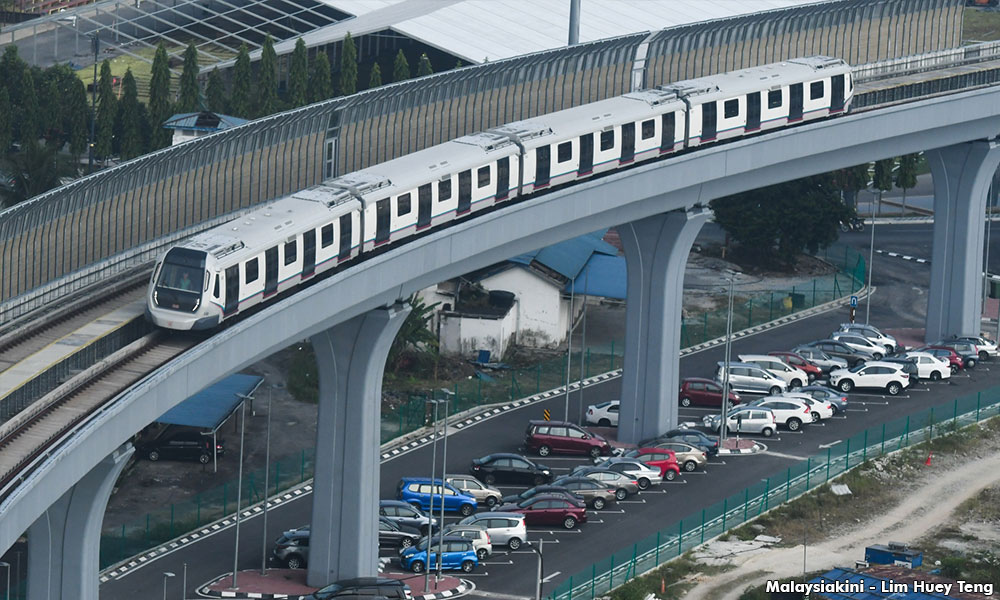
I recently came across a study conducted by Centre for Governance and Political Studies (Cent-GPS) which claims that properties located along MRT Sungai Buloh-Kajang line are not affordable for the M40 and B40 groups which indirectly translates to the low ridership.
Last year, the previous deputy finance minister claimed that the MRT needs at least a 250,000 daily ridership figure to break even in contrast with the then 110,000 ridership daily.
This is interesting as the government has spent billions of taxpayers' money to fund the MRT but people, in general, are not using it. Let's move away from the report and statistics. I take the public transport daily and I will share my experience on why not many people are willing to take the brand new modern MRT on a daily basis.
1. Terrible first and last mile connectivity. Take a look at some of the MRT stations, like the one at Semantan, right after exiting the station concourse - there is no dedicated pelican crossing or zebra crossing for pedestrians to cross the road. Crossing 100 meters to get to the station is a nightmare. Cars don't stop, no signboards or flashing lights to warn drivers of pedestrians crossing. What's so hard in installing a barrier-free pelican crossing like the ones in London or Singapore?
The TRX station is located 400 meters away from a nearby office complex and the Prince Court Hospital but there are no proper walkways with pelican crossings along Jalan Delima.
So instead of risking lives walking, people rather take Grab or just drive. Almost all MRT stations have awful pedestrian connectivity within a 500- meter radius. I give credit to stations that are well-connected to malls like Cochrane and Bandar Utama
2. Lack of signboards leading to the MRT stations from the streets. Take the Bukit Bintang MRT station for example. I've seen tourists getting lost at Changkat trying to find their way to the MRT station simply because there are no signboards leading them to the station. In London, signages are placed clearly every few hundred meters to show how far each underground stations is and the direction to the stations. Signboards are placed so well that they guide you from 400 meters away till you reach the station entrance.
3. Not maximising technology. The MRT SBK (Sg Buloh - Kajang) line fully opened in July last year but till today the alignment route is not available on Google Maps besides the first phase. How are people, especially tourists, supposed to know how to use the MRT?
How are they expected to know about the feeder bus routes? Not many are aware of RapidKL's website journey planner. What's the delay in getting the data loaded into Google? Most people rely on Google Maps rather than on other third-party apps.
4. Inefficient feeder bus services. Some bus stops are located far from strategic places. Like the one opposite Publika. The MRT feeder bus from Semantan stops opposite Publika but upon exiting the bus, one has to walk 300 meters away for the pelican crossing to cross to Publika. Why is there no pelican crossing right in front of the bus stop?
Some bus stops are also occupied by parked cars. So taking the feeder bus can be a rather unpleasant experience despite the cheap RM1 fare. There is no LCD display of buses' ETA at MRT stations or bus stops. So most commuters forget or ignore the buses.
RapidKL also needs to promote more of its bus routes that connect the LRT and MRT in Petaling Jaya at their LRT stations and on social media.
From my experience, the MRT has failed to get its targeted ridership simply because it is not pedestrian friendly. We often underestimate and choose to ignore pedestrians while in developed cities pedestrians are kings of the road. Over here, people rather drive 500 meters away rather than risking their lives walking 500 meters away to get to the MRT station.
DBKL, MBPJ, MRT Corp and the Ministry of Transport need to work together closely to fix these major flaws right away. Ensure proper pelican crossings, clear sidewalks, well-placed signage. Singapore's planning on this is fantastic. If they can do it, I don't see why we can't. - Mkini


No comments:
Post a Comment
Note: Only a member of this blog may post a comment.